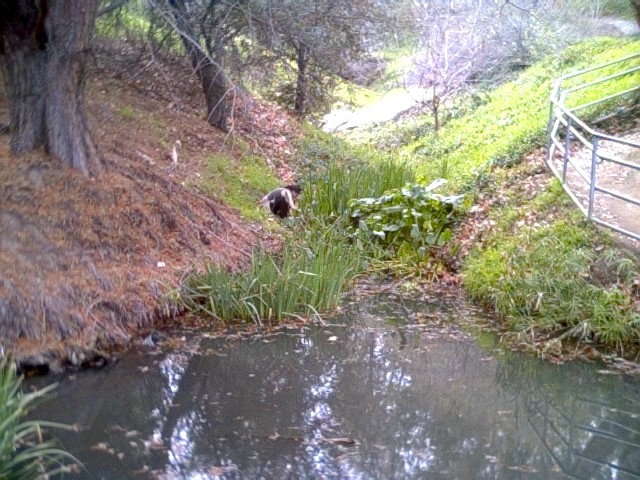

Survey of Soil Nematodes in the UCR Botanic Gardens
Sheila gathering a sample at the pond.
- Description
- Source of support
- Duration
- Project team
- Virtual nematode collection from UCRBG
- Links
Description
Although researchers of UCR’s Department of Nematology have collected occasional samples in the UCR Botanic Gardens for many years, no orderly nematode survey has been conducted to date. I therefore propose to begin such a survey, with the intentions of producing the first list of nematodes from the Gardens, and thus allowing me to learn the basics of sampling and identification of nematodes. The Botanic Gardens are an ideal location for this as they provide a very diverse spectrum of vegetations and habitats, ranging from desert section to pond, and from herbs to mature trees. Because the Gardens are so diverse, I expect to find an equally wide range of nematodes associated with its plant species, in a relatively small and easily accessible area.
My plan is to sample four different areas of the Botanic Gardens: the desert section, the rose garden, the herb garden, and the muddy edges of the pond. Five 500 ml soil samples will be taken around the roots of different plants from each of the four areas. The samples will be brought back to the Nematology greenhouse, where they will be processed by soaking them in water and rinsing them through sieves, to extract the nematodes from the soil. The extracts will then be brought to the laboratory, and nematode numbers will be counted repeatedly and averaged over three counts to ensure accuracy. The nematodes will be fixed in formalin and transferred to glycerin. From each sample, 100 nematodes will be mounted in double-coverslip Cobb slides and identified to family. Relative abundance of each sample will be used to estimate the abundances of the different families. A simple ecological comparison will be made using “Maturity Index” analysis. 20 nematodes will be video captured and presented as online specimens, in web pages linked to the Botanic Gardens website.
Source of support
Duration
October 1st - December 31st 2002
Project team
Links
- Website of the UCR Botanic gardens
- Also look at virtual vouchers of some interesting nematodes found in the Botanic gardens at our VCE site. Aphanolaimus and Chronogaster
